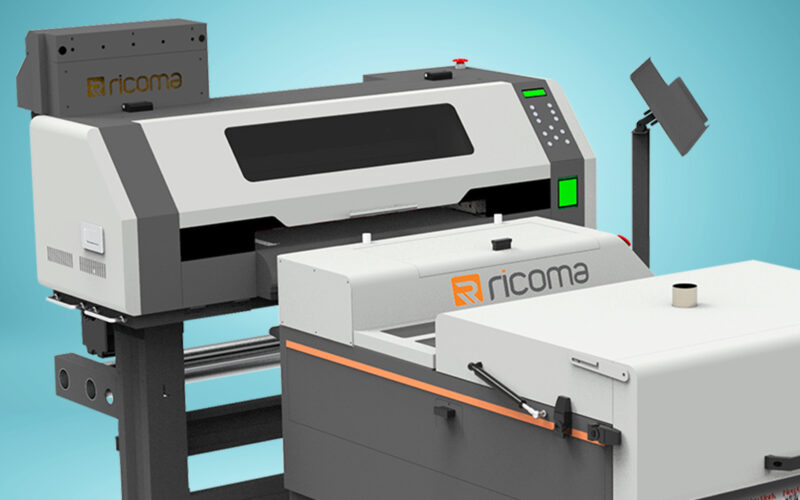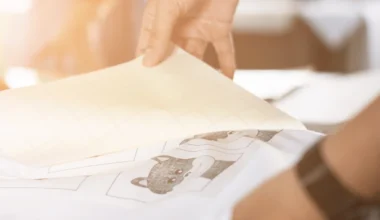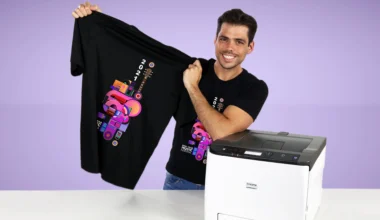If you’ve ever wondered “what is a printhead?,” it’s where the magic happens in your printing process!
It’s the point where ink meets medium, and digital becomes physical. Whether you’re printing photos at home, creating custom t-shirts, or producing large-format banners, the printhead is working tirelessly to ensure your vision comes to life with precision and clarity.
Definition and Function of a Printhead: What is the Printhead on a Printer?
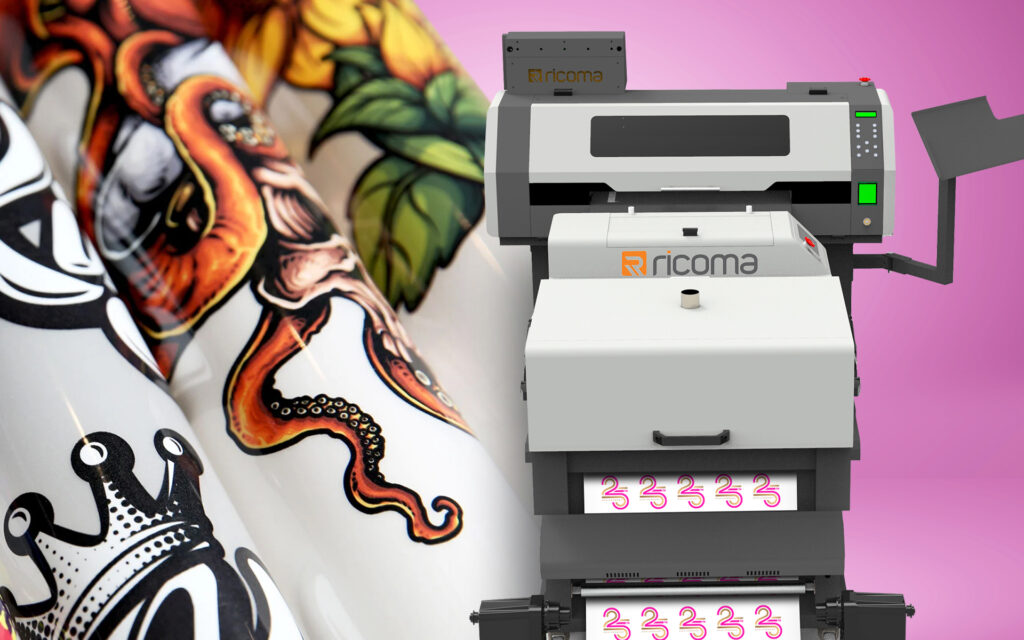
When asking “what is a printhead on a printer,” it’s important to understand that it’s the crucial component responsible for depositing ink or other printing materials onto the printing surface. Think of it as the pen of your printer, carefully placing tiny droplets of ink to form text, images, and graphics.
The primary function of a printhead is to control the precise placement and amount of ink released onto the printing medium, whether that’s paper, fabric, or film.
Printheads work in close conjunction with the printer’s ink delivery system and the printing media. They must be capable of handling different types of ink and adjusting to various media thicknesses and textures. This versatility is crucial for achieving high-quality prints across a range of applications.
The importance of printheads in achieving high-quality prints cannot be overstated. The resolution, color accuracy, and overall clarity of your prints are directly influenced by the quality and performance of the printhead. A well-designed and properly maintained printhead can produce sharp, vibrant prints with accurate color reproduction and fine detail.
Basic Components of a Printhead
A typical printhead consists of several key components working in harmony to deliver ink to the printing surface. The main parts include the:
- Nozzle plate
- Ink chambers
- Actuators
The nozzle plate is a thin, perforated surface containing hundreds or even thousands of tiny holes through which ink is ejected. These nozzles are precisely engineered to control the size and placement of ink droplets.
Behind the nozzle plate are the ink chambers, small reservoirs that hold ink before it’s expelled through the nozzles. The size and shape of these chambers can affect the volume of ink released and the speed of printing. Actuators are the driving force behind ink ejection, creating the pressure needed to push ink through the nozzles.
These components work together in a carefully orchestrated process. When a print command is received, the actuators create pressure in the ink chambers, forcing ink through the nozzles and onto the printing surface. The precision of this process is crucial for achieving high-quality prints.
It’s worth noting that while these basic components are common to most printheads, there can be variations depending on the type of printhead and printing technology. For example, thermal printheads use heat to create pressure, while piezoelectric printheads use electrical charges to deform crystals and create pressure.
How a Printhead Works
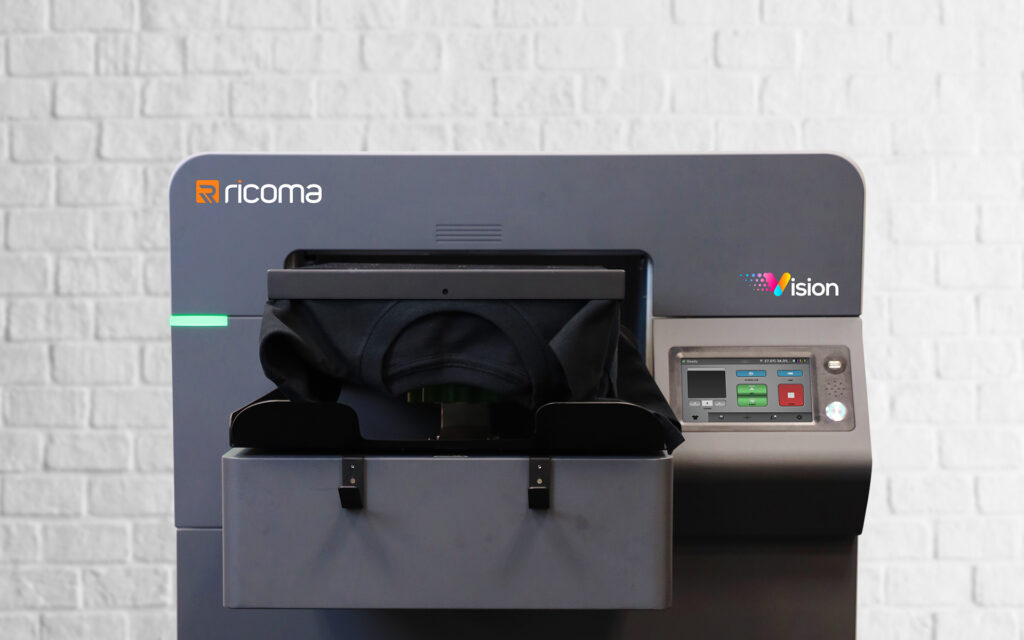
The operation of a printhead is a marvel of precision engineering and timing. When a print job is initiated, the printer’s software translates the digital image or text into instructions for the printhead. These instructions determine which nozzles will fire, how much ink will be released, and the exact timing of each droplet’s ejection.
As the printhead moves across the printing surface (or as the printing surface moves beneath a stationary printhead in some designs), it releases tiny droplets of ink in rapid succession. These droplets, often as small as a few picoliters (trillionths of a liter), combine to form the desired image or text. The process requires incredible precision, with droplets placed accurately to within micrometers.
The timing of ink ejection is crucial for achieving high-quality prints. Printheads must synchronize their operation with the movement of the print carriage or media, ensuring that each droplet lands in exactly the right spot. This precision is what allows modern printers to produce photorealistic images and sharp, crisp text.
Recent technological advancements have further improved printhead functionality. For instance, variable droplet technology allows printheads to adjust the size of ink droplets on the fly, enabling smoother gradients and more detailed prints. Some advanced printheads also incorporate multiple colors or types of ink in a single unit, streamlining the printing process and improving color accuracy.
Types of Printheads (Thermal vs. Piezoelectric)
In the world of printhead technology, two main types dominate the market: thermal and piezoelectric. Each has its own unique method of ejecting ink and comes with distinct advantages and disadvantages.
Thermal printheads, also known as bubble jet printheads, use heat to eject ink droplets. They work by rapidly heating a small resistor in the ink chamber, creating a bubble that forces a droplet of ink through the nozzle. Thermal printheads are generally less expensive to produce and are commonly found in consumer-grade inkjet printers.
They excel in producing sharp text and are capable of high-speed printing. However, they are limited in the types of ink they can use and may have a shorter lifespan due to the stress of repeated heating and cooling.
Piezoelectric printheads, on the other hand, use electrical charges to deform a crystal, creating pressure that pushes ink through the nozzle. This method allows for more precise control over droplet size and placement. Piezoelectric printheads can handle a wider variety of inks, including those that are sensitive to heat.
They are often found in professional-grade printers and are particularly well-suited for applications requiring high precision, such as fine art reproduction or industrial printing. While typically more expensive, piezoelectric printheads generally have a longer lifespan and can produce higher quality prints.
The choice between thermal and piezoelectric printheads often depends on the specific application. For everyday home or office use, thermal printheads are usually sufficient. However, for professional printing, especially in applications like DTG or DTF where specialty inks are used, piezoelectric printheads are often preferred.
The Impact of Printhead Quality on Print Output: What is a Printhead?
Understanding what is a printhead is crucial, as its quality directly influences the final print product in numerous ways.
From the sharpness of text to the vibrancy of colors and the overall durability of the print, the printhead plays a crucial role in determining the end result. This is why investing in high-quality printheads is often a wise decision for businesses and individuals who rely on consistent, professional-grade prints.
High-quality printheads typically offer better precision in ink droplet placement, more consistent ink flow, and longer lifespans. These factors contribute to sharper images, more accurate colors, and reduced maintenance needs. While premium printheads may come with a higher upfront cost, they often prove to be more cost-effective in the long run due to their superior performance and durability.
When choosing a printer, it’s important to understand what is a printhead and assess its quality. Look for specifications such as resolution (measured in dots per inch or DPI), nozzle count, and droplet size. Consider the printer’s intended use and whether the printhead technology matches your needs. Reading reviews and seeing sample prints can also help you gauge the printhead’s performance. Remember, a printer is only as good as its printhead, so this component should be a key factor in your decision-making process.
Resolution and Print Quality

To fully grasp what is a printhead, it’s essential to know that its resolution is a critical factor in determining the overall quality of your prints.
Resolution is typically measured in dots per inch (DPI), which refers to the number of individual dots of ink the printhead can place within one square inch. The higher the DPI, the finer the detail the printer can reproduce.
Higher-resolution printheads are capable of producing sharper text, smoother gradients, and more detailed images. For example, a printhead with a resolution of 1200 DPI can create much finer details than one with 300 DPI. This difference is particularly noticeable in photographic prints or designs with intricate patterns.
However, it’s important to note that different printing applications require different levels of resolution. For instance, large format prints viewed from a distance may not require as high a resolution as small, detailed prints meant for close inspection.
Color Accuracy and Consistency
Printheads play a vital role in achieving color accuracy and consistency in prints. The precision with which a printhead can place ink droplets affects how colors blend and appear on the printed medium. High-quality printheads can produce more accurate color reproduction by allowing for finer control over ink placement and droplet size.
Color consistency is particularly important in professional printing environments where matching brand colors or reproducing artwork accurately is crucial. Advanced printhead technologies have significantly improved color reproduction capabilities. For instance, some modern printheads can vary the size of ink droplets, allowing for smoother color gradients and more precise color mixing.
Print Speed and Efficiency
The design of a printhead significantly impacts printing speed and overall efficiency. Printheads with a higher number of nozzles can deposit more ink in a single pass, increasing print speed. Additionally, more advanced printheads can fire ink droplets at a higher frequency, further boosting printing speed.
However, it’s important to strike a balance between speed and quality. While faster printing is generally desirable, especially in high-volume environments, it shouldn’t come at the expense of print quality. The best printheads are those that can maintain high-quality output even at increased speeds.
What is a Printer Printhead?: Create Beautiful Prints with Ricoma
Our printers are equipped with high-resolution printheads that ensure crisp, vibrant prints every time. The precision ink delivery systems in our machines allow for accurate color reproduction and fine detail, making them ideal for everything from photorealistic designs to intricate patterns.
Plus, our printheads are designed for longevity and efficiency, helping you reduce operational costs while maintaining top-notch print quality. Browse through our printers today — like our DTF printers – to start your crafting business right!
